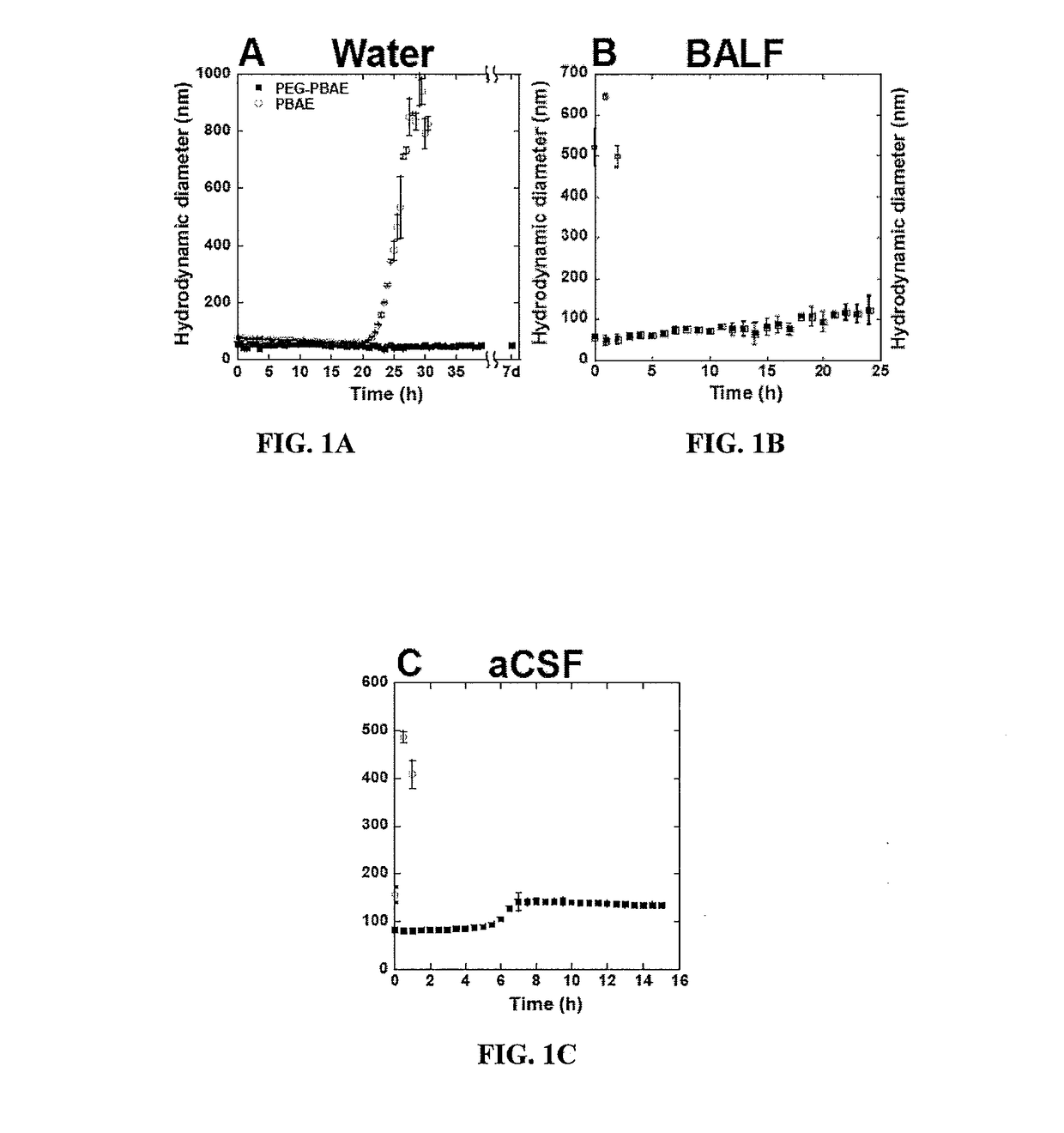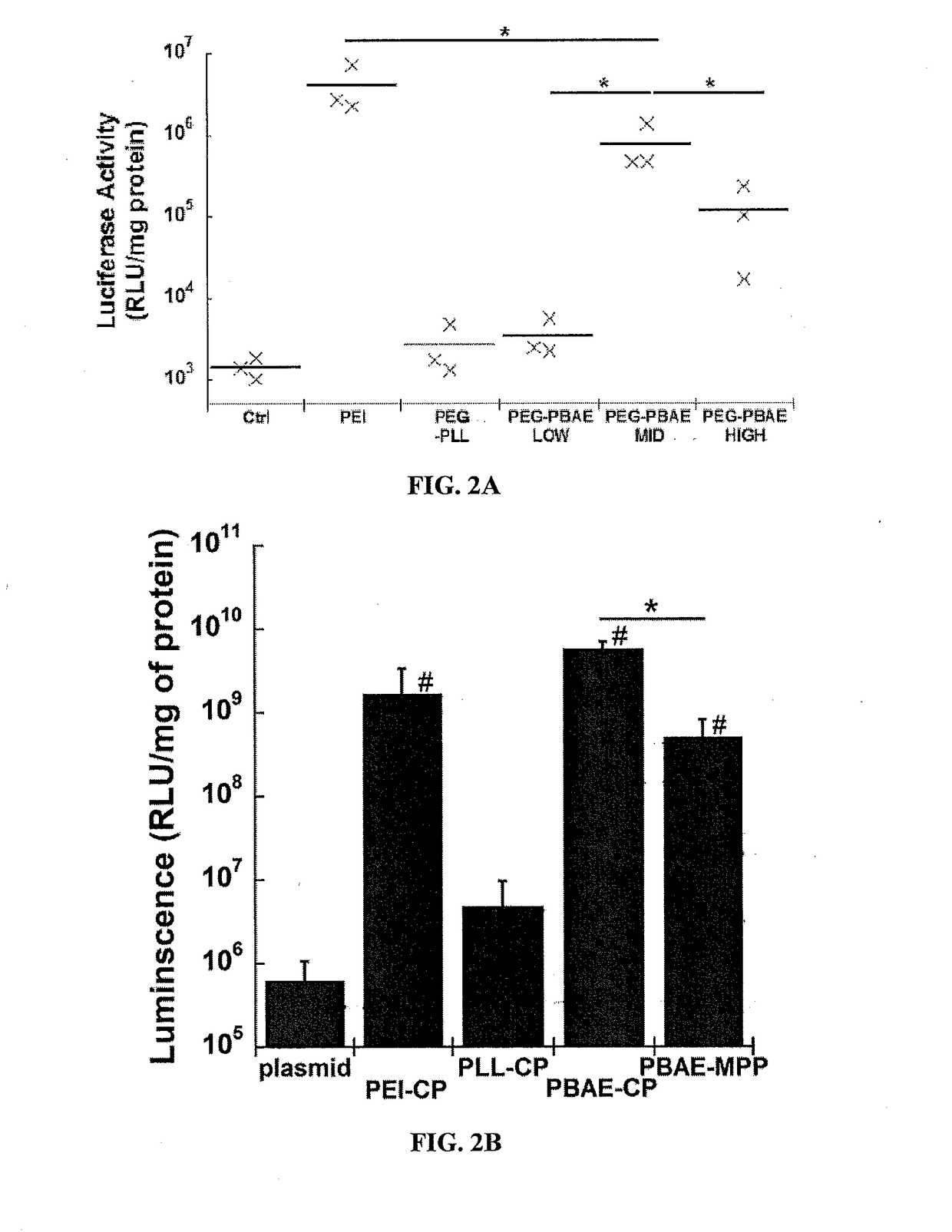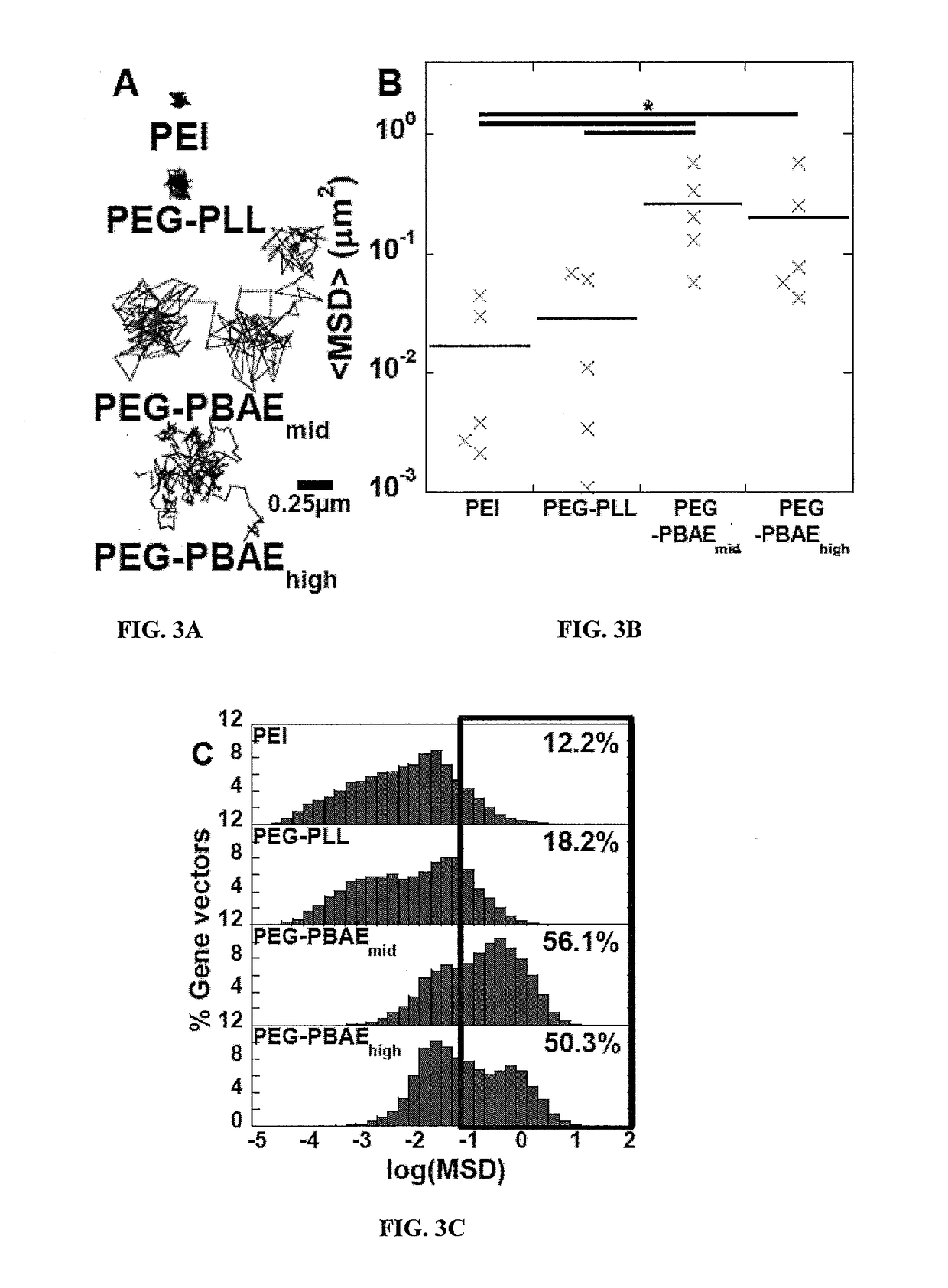Highly stable biodegradable gene vector platforms for overcoming biological barriers
a biodegradable, gene technology, applied in the field of gene delivery, can solve the problems of low packaging capacity, high cost of production, and technical difficulties in scale-up, and achieve the effects of high level transgene expression, high level of stability, and dense surface coverag
- Summary
- Abstract
- Description
- Claims
- Application Information
AI Technical Summary
Benefits of technology
Problems solved by technology
Method used
Image
Examples
example 1
Densely PEGylated Vectors Formulated from PEG-PBAE have a Near Neutral Surface Charge and a Drastically Improved Stability Profile
Materials and Methods
[0231]Polymer Synthesis
[0232]The base poly(β-amino ester) (PBAE) polymers with varying molecular weights were synthesized by reacting 1,4-butanediol diacrylate and 4-amino-1-butanol at the molar ratios of 1.2:1 (PBAE low, MW˜4 kDa), 1.1:1 (PBAE mid, MW˜7 kDa) and 1.05:1 (PBAE high, MW˜11 kDa) while stirring at 90° C. for 24 hours. Polymers were then precipitated and washed in cold ether and dried under vacuum. The molecular weights of the three PBAE base polymers were estimated by gel permeation chromatography and nuclear magnetic resonance spectroscopy. For the capping of end diacrylate groups, each base PBAE polymer was dissolved in tetrahydrofuran (THF) at 100 mg / ml, 30 molar excess of 2-(3-aminopropylamino ethanol) was added, and reaction was undertaken while stirring at room temperature for 2-3 hours. The end capped PBAE polymers...
example 2
PEG-PBAE Nanoparticles Provide Effective Gene Transfer to the Lung Cells In Vitro and In Vivo
Materials and Methods
[0246]Cell Culture
[0247]Human bronchial epithelial (BEAS-2B) cells (ATCC, Manassas, Va.) were cultured in DMEM / F12 (Invitrogen Corp., Carlsbad, Calif.) supplemented with 10% FBS and 1% pen / strep. When cells were 70-80% confluent on passage one, they were immediately re-seeded in 24-well plates to assess transfection. U87 human gioblastoma cells were provided by Dr. Henry Brem and were cultured in Dulbecco's modified Eagle's medium (DMEM, Invitrogen Corp., Carlsbad, Calif.) supplemented with 1% penicillin / streptomycin (pen / strep, Invitrogen Corp., Carlsbad, Calif.) and 10% heat inactivated fetal bovine serum (FBS, Invitrogen Corp., Carlsbad, Calif.). When cells were 70-80% confluent, they were reseeded 24-well plates to assess transfection and cell uptake of gene vectors.
[0248]In Vitro Transfection
[0249]To assess in vitro transfection cells were seeded at an initial densi...
example 3
PEG-PBAE Gene Vectors Provide High Level and Widespread Gene Transfer to the Brain
Materials and Methods
Cell Culture
[0269]Rat brain primary astrocytes were provided by Dr. Arun Venkatesan. Rat brain primary mixed cultures were isolated form neonatal P3-P6 rats and astrocytes were isolated with the conventional shake off method. Cells were cultured in DMEM / F12 (Invitrogen Corp., Carlsbad, Calif.) supplemented with 10% FBS and 1% penicillin / streptomycin. When cells were 70-80% confluent on passage one, they were immediately re-seeded in 24-well plates to assess transfection and cell uptake of gene vectors.
Multiple Particle Tracking
[0270]Multiple particle tracking (MPT) was used to estimate the mean square displacement (MSD) of fluorescent gene vectors in ex vivo rodent brain slices. Briefly, brain was harvested from healthy and F98 tumor inoculated adult Fisher rats and incubated in aCSF for 10 minutes on ice. Brain was sliced into 1.5 mm coronal slices using a Zivic brain matrix slice...
PUM
| Property | Measurement | Unit |
|---|---|---|
| hydrodynamic diameter | aaaaa | aaaaa |
| molar ratio | aaaaa | aaaaa |
| molar ratio | aaaaa | aaaaa |
Abstract
Description
Claims
Application Information
 Login to View More
Login to View More - R&D
- Intellectual Property
- Life Sciences
- Materials
- Tech Scout
- Unparalleled Data Quality
- Higher Quality Content
- 60% Fewer Hallucinations
Browse by: Latest US Patents, China's latest patents, Technical Efficacy Thesaurus, Application Domain, Technology Topic, Popular Technical Reports.
© 2025 PatSnap. All rights reserved.Legal|Privacy policy|Modern Slavery Act Transparency Statement|Sitemap|About US| Contact US: help@patsnap.com



